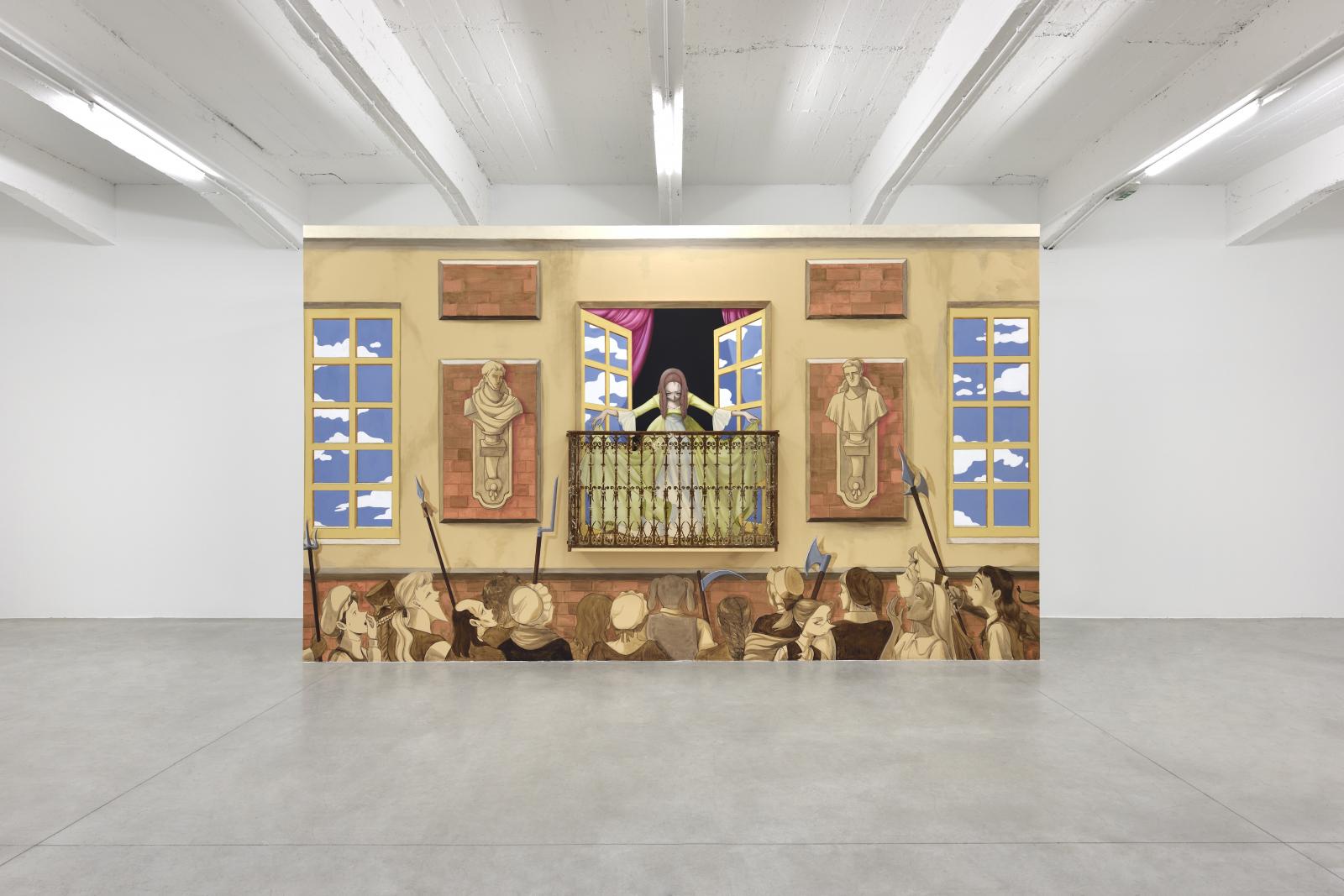Julien Ceccaldi
L'Almanach 23 : Julien Ceccaldi
Born in 1987 (Canada). Lives and works in New York, USA.
Acknowledgements: Gaga, Los Angeles, Mexico.
On the night of October 6th, 1789, Marie-Antoinette appeared before the hungering, mutinous populace of France. Her bow on the front balcony of the Palace of Versailles, replete with a grace that belied her fear and fatigue, dazzled the mob below—a climactic moment depicted in numerous dramatizations (Sofia Coppola) and biographies (Stefan Zweig, Antonia Fraser).
But the most explicit references in this installation, which Julien Ceccaldi has created specifically for Le Consortium, are to shōjo manga pioneer Riyoko Ikeda’s Rose of Versailles series and its cult anime adaptation Lady Oscar. Shōjo, a category of manga mainly aimed at adolescent girls, has left an indelible impression on Ceccaldi’s formative years and influenced his work profoundly. Its golden age came in the 1970s with the emergence of a new generation of female mangaka. These subversives shook up the genre by playing with narrative conventions, experimenting with encapsulation and compartmentalization, and interrogating presentations of sexuality and identity. While focused on the “passions”, the stories they told were neither miserabilist nor melodramatic but darkly sentimental.
Lady Oscar, the tale of a girl raised as a boy so she can succeed her father as commander of the Royal Guard, would leave an imprint on the generation of kids raised on the French TV show Récré A2, the Japanese series Candy Candy and the songs of Mylène Farmer. Today, the character of Oscar remains a true androgynous icon, a utopian embodiment of gender ambiguity.
Marie-Antoinette as portrayed by Ikeda and Ceccaldi is, to borrow from Zweig, an “average woman”, neither a saint nor a shrew, and it is precisely this averageness that allows them to explore the entire gamut of her emotions and contradictions.
The exhausted yet determined expression on the face of Ceccaldi’s Marie-Antoinette recalls other recurring elements in his oeuvre: traumatized, emaciated, skeletal figures; brainless fashionistas who continue to be obsessed with their looks even in the hereafter; bald-headed, greenish-skinned boys in the throes of agony, tortured by sex and frustration. There’s a bit of Marie-Claude and Francis, immediate or distant avatars of the artist himself, in this vision of the young queen, an ambivalent character oscillating between dignity, nobility and the romantic excesses of an adolescence forever in crisis.
Since the 2000s, when he first began collaborating online with other manga fans, Ceccaldi, who was catapulted to public recognition by comics such as Human Furniture (2017), which features the just-mentioned Francis, and Solito (2019), has been using various surfaces—walls, windows, clothing, tie-in merchandise—to explore a space of disproportion and distortion populated by decorative elements and found objects. This approach allows him to move freely and without hierarchy between media, genres and contexts, and to apply his own idiom to masochistic tales of solitary lovers, to stories of young virgins consumed by their own commodification.
— Stéphanie Moisdon


